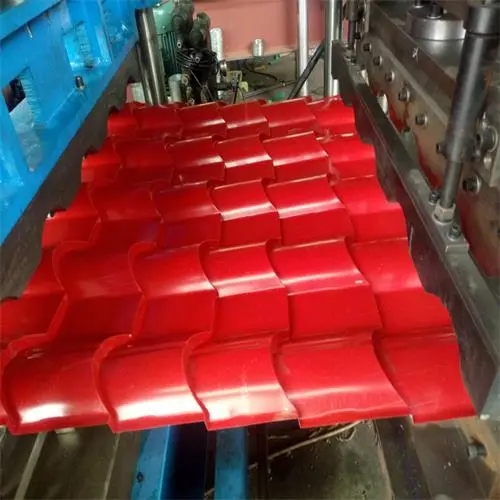
Cold Roll Forming Machine Revolutionizing the Metal Fabrication Industry
In the realm of metal fabrication, cold roll forming machines have emerged as a pivotal technology, streamlining the production of metal profiles with unparalleled precision and efficiency. These machines play a crucial role in various industries, including construction, automotive, and manufacturing, thanks to their ability to produce complex shapes with minimal waste.
What is Cold Roll Forming?
Cold roll forming is a continuous bending operation in which metal sheets or strips are gradually and sequentially shaped into desired profiles at room temperature. Unlike traditional methods that require extensive cutting and welding, cold roll forming produces components by deforming the material into a specific shape without exceeding its yield strength. This process not only enhances the structural integrity of the final product but also allows for higher production rates.
How Cold Roll Forming Machines Work
Cold roll forming machines consist of a series of rollers and forming stations. The process begins with a flat metal strip fed through the machine, where it passes through a sequence of rollers specifically designed for shaping. Each roller gradually bends the strip into the target profile over multiple passes. This approach allows for significant design flexibility and the production of intricate shapes with consistent wall thickness.
Benefits of Cold Roll Forming Machines
1. Efficiency and High Volume Production One of the primary advantages of cold roll forming is its ability to produce large quantities of uniform parts efficiently. Once the initial tooling is set up, the machinery can run continuously, significantly reducing production times.
2. Material Conservation Cold roll forming is a highly material-efficient process. Since it utilizes the entire strip without cutting away excess material, it minimizes waste. This not only contributes to cost savings but also aligns with sustainable manufacturing practices.
3. Consistent Quality and Precision The use of advanced technology in cold roll forming machines ensures high precision in the dimensions of the produced profiles. With automated controls and modern sensors, manufacturers can maintain strict tolerances and produce parts that meet rigorous quality standards.

4. Versatility Cold roll forming can be applied to various materials, including steel, aluminum, and other metal alloys. This versatility makes it suitable for an expansive range of applications, from constructing building frames to producing automotive components.
5. Strong and Lightweight Products The cold roll forming process enhances the strength-to-weight ratio of the final product. The formed profiles exhibit excellent mechanical properties, making them ideal for applications requiring both durability and lightweight construction.
Applications in Various Industries
Cold roll forming machines have found application in a wide spectrum of sectors
- Construction In the construction industry, cold-formed steel sections are widely used for framing systems, roofing, and wall panels, offering strength and durability while maintaining a lightweight profile. - Automotive The automotive sector leverages cold roll forming to create essential structural components, such as chassis reinforcements and body panels, contributing to vehicle safety and performance.
- Manufacturing Various manufacturing sectors utilize bespoke profiles for machinery construction, brackets, and supports, showcasing the adaptability of cold roll forming technology.
The Future of Cold Roll Forming
As industries continue to evolve and the demand for customized solutions increases, the cold roll forming machine's adaptability and efficiency position it as a valuable asset in modern manufacturing. Future advancements, such as the integration of artificial intelligence and robotics, promise to further enhance the capabilities of these machines, enabling even more intricate designs and automated production processes.
Conclusion
Cold roll forming machines are undeniably reshaping the landscape of metal fabrication. By providing efficient production, minimal waste, and high-quality components, they are not only revolutionizing traditional methods but also setting new benchmarks for the industry. As technology continues to advance, the potential applications and benefits of cold roll forming will undoubtedly expand, ensuring its integral role in the future of manufacturing.